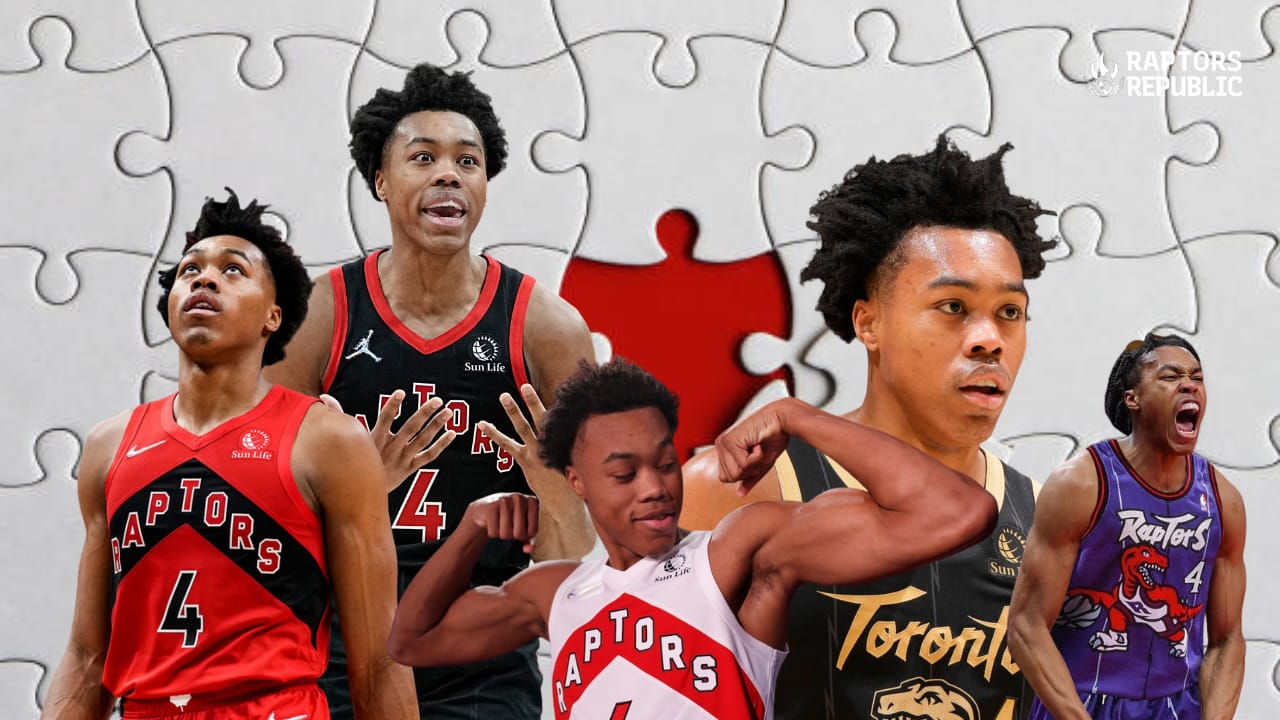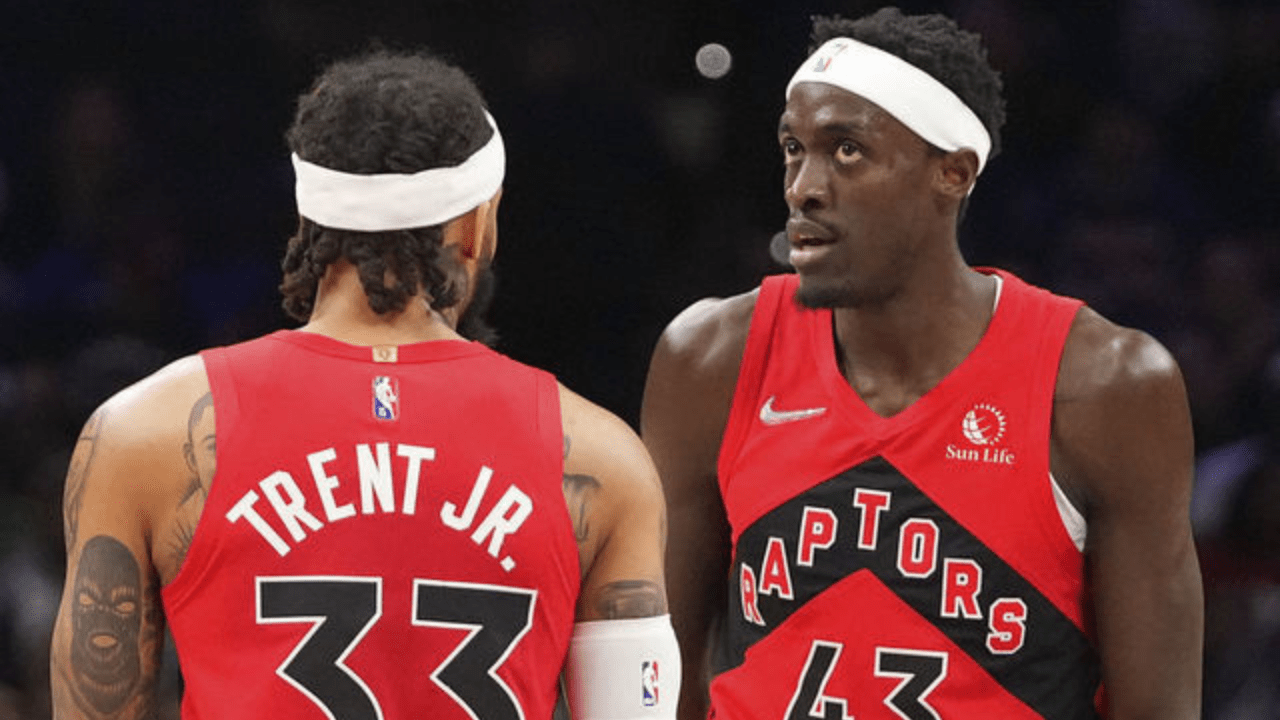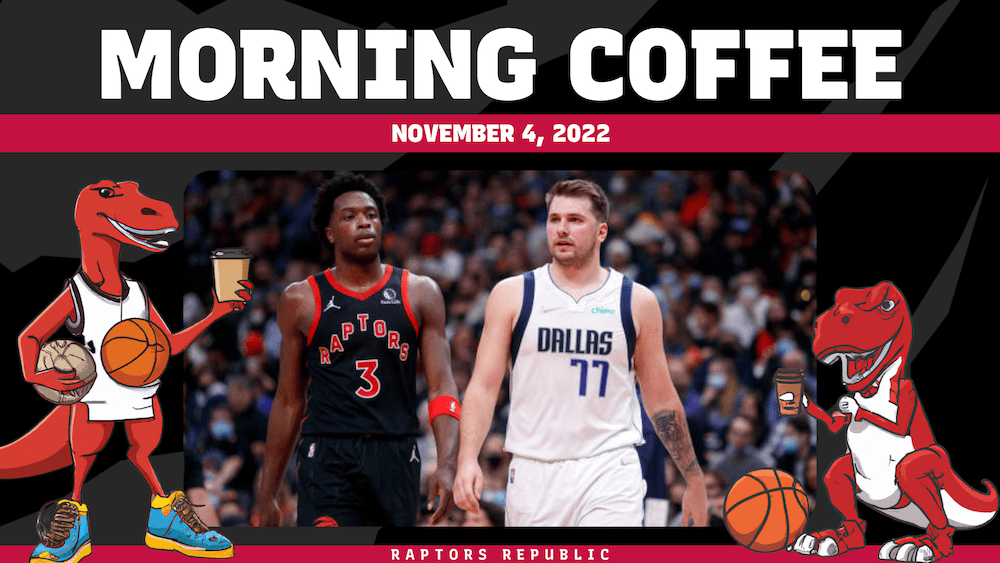You haven’t lived until you’ve heard the frenetic and startling music of Arnold Schoenberg. Not just heard, but listened to. Understood. He was frequently detested because his music was so passionate and frenzied, so difficult to understand. He pushed the boundaries of musical theory — aesthetic theory in general. He was an expressionist, atonal (although not according to him), avant-garde. He developed musical theory and shed skins with ease, adopted new approaches and subgenres. He was such a master of his craft that he planted eureka moments like easter eggs in his music.
Scottie Barnes is slowly becoming the Schoenberg of basketball. His art isn’t always fluid and idealized, like Mozart. He has some of that to his game, sure. But he’s just as likely to play the perfect note as to leave it as a tease and play outside of the key as a crunchy duet with our expectations. He borrows as much from Tom Waits as from Schoenberg. He’ll pivot the wrong way, twist his body back, and surprise defenders and audiences alike with his kinetic creativity. He turns the crass into the divine. But he’ll never get lost in the frantic maze of his own creativity. Well, rarely.
Barnes’ simultaneous balletic and bombastic approach was on full display in the Toronto Raptors’ 143-100 win over the San Antonio Spurs. He didn’t lead the Raptors in any statistical category outside of minutes played. He wasn’t as overwhelming as he can be, and he wasn’t as forceful as he should be. But his aesthetic value was an end in and of itself, contributing as much to the joy of the game as to Toronto’s ability to win.
And that purpose in aesthetic, in joy, in shocking and unorthodox play, manifested directly in Barnes’ passing.

Barnes was mainlining rocket fuel from jump street. This came fewer than two minutes into the game.
The outlandish result of the above play was not Barnes’ turnover, but his ability to process the event and turn it into paydirt only moments later. He threw a custom paintjob on the play, keeping the one-handed gather out of the pick and roll, but switching sides and taking a few extra steps into the paint to throw a Steve Nash (Darius Garland!) lob for the alley-oop dunk. When chaos meets order.
Then Barnes became infatuated with a suite of no-look baseball passes. First a series of pound dribbles to open up the lane followed by this strike to the corner for a Chris Boucher triple.
Barnes liked that. He liked it very much. So on the next possession he basically did it again. This time he used his increasingly tight dribble sequencing to dart into the lane without a screen, and he emphasized his lookaway to a comical degree. When humour meets deadly seriousness.
He chained some microskills together for his next magic act. An offensive rebound, a loopy curl away from the rim, a shot fake, and of course a no-look touch pass as the ribbon to tie up such a pretty package.
Then a no-look baseball bullet from above the break to just under the rim. That pathway for the ball is usually clogged with arms — why wasn’t it? Barnes used his prior passes to convince the help he was going to throw the skip to the corner. Just some ho-hum genius using his past preferences to persuade defenders to shift a few inches out of position, and to see the new passing lane under the rim open, and to execute to actually get the ball there.
Finding himself in transition next, Barnes used only his weak hand. Some probing dribbles until the window opened, and then he threw another no-look dime through a tight window for a layup. This was a Carmelo Anthony special back in the day. (Because right-handed shooters are more threatening pulling up going left, so chaining your lefty dribble to your lefty pass functionally keeps the window open longer. And it looks better besides.)
The first time he actually looked at his target in a while, Barnes tossed a casual one-handed outlet pass to start the break. Immediate decision making is always helpful, and the Raptors wouldn’t have had the man advantage without it.
Moments later, Barnes sparked even more transition play. This time, he found himself defending a Spurs’ fastbreak. He inbounded immediately to give the Raptors the numerical advantage going the other way, turning the Spurs’ plus into a minus. This time, Barnes drew directly from the Kyle Lowry playbook, as well as the jiu-jitsu approach, in turning his opponent’s strength into a weakness.
To end the half, Barnes found himself in an actual set rather than the ordered chaos of transition basketball, and he read the Spurs’ defense perfectly. Gary Trent Jr. set a back screen (that he ghosted) for O.G. Anunoby, and because Trent is a deadly shooter, he took both defenders with him for an instant. That put Anunoby’s defender on the outside of the rim, and then a veer screen from Christian Koloko for the exiting Trent kept the defense on the outside looking in. Anunoby had an instant alone in the paint — Barnes kept the window for the pass open with his eyes, staring at Trent’s cut — and he threaded the needle with a perfectly placed lob pass. This might be the tightest window of the bunch, as Barnes needed to put it low and soft, while still releasing so early that the backside defender couldn’t catch up. Quiet and eerie, the soundtrack to a horror movie.
After so much wizardry, it’s no wonder Barnes had his defenders leaping and flailing like marionettes going forward. On this play early in the third quarter, the final of Barnes’ unorthodox highlight mix against the Spurs, he actually killed an advantage by slowing down to make a decision. But just by holding the ball in a passing position he threw two Spurs into rhapsodic fits of panic, opening up an easy kickout for an open triple.
Barnes only finished the game against the Spurs with five assists. That’s nothing special for the young wunderkind. Pascal Siakam finished with 11 dimes, dominating the box score in that respect. But Barnes was more ethereal. If Siakam was the Bohr model, simplified and foundational, Barnes was quantum mechanics, in flux and sparking in and out of the visible realm.
At no point did Barnes pound the Spurs into submission. He more subtle than that: death by a thousand cuts (that he both created with his legs and fed with the rock). He was a conductor, but not given 100 reps a game — more a popup shop than a floor general. He played games within the game by his lonesome, throwing a series of no-look passes in the second quarter, using two plays to set up the third, revisiting his motif later for callback assists. He layered ghosts of his past passing lanes on top of the court in the present, building a spider web of angles and events only he could see.
Schoenberg was never, and still isn’t, recognized for his audacious brilliance by the general populace. In many ways, modern music exists in his shadow. Barnes isn’t there yet. He remains a user of others’ innovations rather than a creator of his own. He drew on the ghosts of Nash, Melo, and Lowry, to name a few, in just the single game against the Spurs. But his mad brilliance, the collection of so many spirits in his own, is uniquely Barnes. He uses expectations to his advantage and sees what few others can. He has the audacity and skill to execute based on that vision, too. He plays games within games. And like Schoenberg and Waits and so many geniuses before him, Barnes doesn’t always play the pretty notes, the obvious motifs, is happy to exist within the filth of the off key. Sometimes the ugly, the unexpected, the uncelebrated: that’s where the poetry lives.




